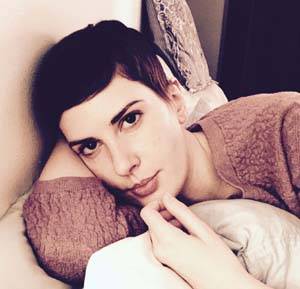Control Order House is and is not a photo book. It occupies a strange aesthetic territory somewhere between a tenancy agreement, a “look-book” for an archetypal suburban residence and a juridical document. Its uncertain status works to its advantage, however, inviting the prospective reader to decode its secrets.
For a very brief period in December 2011, Clark was given access to one such house in Ballardian suburbia, with the permission of CE, its temporary inhabitant. Clark’s designated time was cut short, so his plan to create a virtual panorama of the space had to be reimagined. The resulting photographs, mostly devoid of composition, look like surveillance images. They show textures, colours and fabrics chosen to furnish a house that might be rented to students, or to families at the lower end of the income scale. It is a curiously timeless environment; the interior could be from any lower-middle-class house in the past forty years. The wallpaper in particular – anaglypta and woodchip – is more redolent of the 1970s, a period when the UK democratic process was similarly compromised: security forces in Northern Ireland detained 342 people without trial, suspected of IRA membership.
This latest work advances a photographic continuum of making society’s control and power structures visible. In his previous book, Guantanamo: If the Light Goes Out, Clark framed the experience of former detainees in terms of the physical space of home. Through the deliberate act of not showing the abject body of the tortured, it was the human experience that dominated. In making this new work, he carefully assembles a dossier of evidence in plain sight – redacted documents, CE’s handwritten account of his daily routine, stark photographs of an alien living environment – which serves to shatter an illusion of democracy. Between images of walls, ceilings, curtains, door frames, cheap furniture, we see how the detention without trial of CE reduces human life – his and ours – to an organising principle of a war (on terror) in which actions are taken by the government “for” the people, as though they were a necessary condition of existence.
Even the sequencing of the book plays on ideas of control. By using the document that is effectively a tenancy agreement with the Home Office in the opening pages, and also by publishing the Control Order – with its repeated references to “closed” proceedings – Clark reveals the different ways in which subjects are limited and regulated by power. The domination of the Control Order within this slight publication – at some 30 pages – prevents the simple categorization of Control Order House as a “photography” book per se and offers a challenge to the reader to engage with the sometimes banal, sometimes arcane, often pedantic language of power. Much like the content of some of the letters received by Omar Deghayes during his incarceration at Guantanamo (the memorable Christmas card from “Sexy Leslie and Brian. From our romantic holiday”), Clark’s enterprise reveals a keen awareness of the absurd hovering over the sanctity of British justice. Garish curtains, an illicit cat, a large suburban house with a single occupant, suspected of involvement with Al Qaeda in Somalia… it might be funny if it weren’t so iniquitous.
Control Orders were superseded by Terrorist Prevention and Investigation Methods (TPIMs) in 2012, of which there are ten to date, all pertaining to Muslim men. The new form of detention without trial forbids relocation of the subject, and has more lax rules, for example, in relation to using the internet (from a single specified computer) plus shorter curfews. In theory, TPIMs are harder to implement than Control Orders, because there must be “reasonable belief” as opposed to “reasonable suspicion”. Yet as the Lords and the Commons prepare to play “ping-pong’” with the Justice and Security Bill, a British commitment to secret legal proceedings continues apace.
This indefinable book, published by the progressive new imprint Here Press, is what history looks like, in the Foucaultian, archaeological sense. In exposing difficult-to-photograph practices, it brings forth a kind of visibility that would otherwise remain hidden. Suburbia, though it may dream of violence, provides a veneer of respectability to all that takes place within. Clark pulls aside the net curtains.
All photographs from Control Order House by Edmund Clark, published by Here Press.







